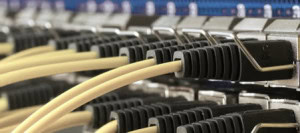A cable assembly can be defined as a collection of wires and/or cables grouped into a single unit with connectors attached at both or any one end. In industrial as well as other applications, cable assemblies are used to connect different types of equipment and instruments with each other.
At times, the required connectors and wire configurations can be very specific depending on the nature of the application. Therefore, when selecting industrial cable assemblies, it is important to consider the area of application and the type specifications desired. Some of the relevant specifications for industrial cable assembly include gender, shielding, and approvals/certifications depending on the applications.
How Cable Assemblies Work
Any type of cable assembly can be identified by the plugs and receptacles that are attached to its ends. Actually, the connectors featured in an industrial cable assembly are determined by the application for which it has been manufactured. Along with that, the nature of application also determines the dimensions and electrical specifications of the cable assembly, as well as the approvals and certifications required. These days, various suppliers offer custom industrial cables and assemblies for automotive, audio/video (AV), radio frequency (RF), and telecommunication applications. Manufacturers also offer custom cable assemblies for personal computers (PCs) and local area network (LAN) applications, as well as industrial control and instrumentation systems. Manufacturers offer various types of custom cable assemblies such as cordage, patch cords, and cable extenders to suit a variety of applications.
Types of Industrial Cable Assemblies
The different types of industrial cable assemblies are grouped according to the desired applications:
- Multicore assembly is designed to accomplish two or more functions at the same time through a single cable assembly. For instance, you can choose to have power, data, and signal in the same cable.
- Audio/visual (AV) cables are used for connecting audio and video equipment to a computer or other displays. A few examples of AV cables include DVI, RGB and VGA cables.
- Computer cables can be used to connect hard drives, monitors, printers, and other devices to a computer or other systems. These include ATA/SATA, IEEE 1394, IDE, UTP with different connectors, USB, VGA, and HDMI cables.
- General communication and networking cables for data transmission and networking between computers, controllers and other devices.
- Patch cables also known as patch cords are electrical or optical cables that are used for connecting two or more devices. These cables are available in different lengths and can be used for numerous applications that include panel connection, Ethernet, etc.
- Telecommunication cables are useful for connecting telephones, intercoms and handsets.
These days, a number of manufacturers provide custom cable assemblies created as per the client’s needs. Therefore, it is always recommended to speak to a manufacturer for the exact industrial cable assembly required for your application.

